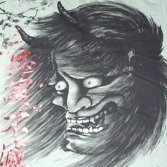TransAsia plane crashes in Taiwan with 58 people on board; 2 killed
-
Recently Browsing 0 members
- No registered users viewing this page.
-
Topics
-
-
Popular Contributors
-
-
Latest posts...
-
42
Health Rabies Deaths Triple in Thailand: Urgent Alerts Issued
Your pal is an idiot. Why take the risk? Rabies has a 100% death rate. https://www.bbc.com/news/articles/c98wyllp170o -
258
Economy Trump Dishes Out 36% Tariffs in Shock Move Against Thailand
I guess the rule is all caputals aren't allowed...might be wrong, though. -
42
Health Rabies Deaths Triple in Thailand: Urgent Alerts Issued
I think the concern is not specifically about the number of rabies-related deaths; seven so far this year, if I’m not mistaken, but in the fact that its a threefold increase, which indicates a surge in cases among cats and dogs. Thus: while the death toll itself remains relatively low, this spike in animal infections should not be dismissed. At a certain point, rising case numbers cross a threshold; what might be called a critical mass, where the spread becomes self-sustaining and increasingly difficult to contain. When that happens, the risk of exponential transmission grows, especially in areas with high stray populations, low vaccination coverage, and poor public awareness. What’s particularly worrying is that rabies, once established in an area, is extraordinarily difficult to eliminate. The virus is almost always fatal once symptoms appear, and by the time it's identified in animals, it's often too late to prevent transmission to humans. Add to that the challenge of monitoring and controlling free-roaming or feral animals, and you have the makings of a public health problem that could easily escalate if left unchecked. Additionally, public complacency plays a role, people often only become concerned when a crisis is already at their doorstep. But the true value of disease control lies in early intervention, not reactive panic. Thus: with rising case numbers as an early warning signal, now is the time to step up surveillance, reinforce vaccination efforts in animals, and ensure that the public knows when and how to seek post-exposure treatment. In short, while the current situation is clearly not a crisis, the trajectory suggests a growing risk that demands proactive management before it becomes a more serious problem. So, while some may casually dismiss the current situation...saying, "It’s only a handful of cases".... that complacency is precisely what allows problems to grow unnoticed. Fast-forward five years, and the very same voices may be asking, "Why wasn’t this addressed earlier?" Public health threats rarely explode overnight; they build quietly, often in the background, while attention is elsewhere. By the time the consequences become visible, the opportunity for simple, preventive action has usually passed. What was once manageable now requires costly and complex intervention. It’s far wiser to recognise the warning signs now and take measured, proactive steps, than to look back in hindsight, asking why no one acted when the risks were still containable. Its exactly the same as the 'stray dog' sitation in the first place !!! -
13
Report Phuket Bars Cleared to Serve Alcohol on Buddhist Holidays
In my eyes it does. Thats why I dont concern myself with stuff that doesnt concern me because it doesnt affect me. I prefer to excersize my efforts on: Stuff that concerns me and stuff that I can affect. That isnt booze rules in Thailand -
16
Can anyone recommend a sharpening stone....knives, general stuff
Aliexpress sells them for fairly cheap. They sells sets, starting at around 10 dollars, depending on how many grits arw in the set. It's worth trying. If the stones suck, you can just return them. I've bought lots of stuff from AliExpress before and rarely had problems, and they all turned out in my favor. I haven't ordered any sharpening stones yet, but if there's a problem with them, you'll definitely get your money back because it's a Chinese online store and they're ALL about their reputation. So, the few times someone tried to play a number on me AliExpress always sided with me and got my money back ASAP. -
38
Does anyone do short-term trading and can give advice for my wife please?
Since I came back to Caaannnaaaadaaa I opened the account with Questrade because of their zero comission fees. It is not that difficult to turn in a small profit trading blue chip companies even on their way down. The zero comission really helps, something which I doubt is available in canada. Even if you f up, the blue chip companies like Enbridge will pay you 6% dividend, so you can just wait it out. A nice little earner.
-
-
Popular in The Pub









.thumb.jpeg.42eea318e3350459f0aaaa5460326bca.jpeg)



Recommended Posts
Create an account or sign in to comment
You need to be a member in order to leave a comment
Create an account
Sign up for a new account in our community. It's easy!
Register a new accountSign in
Already have an account? Sign in here.
Sign In Now